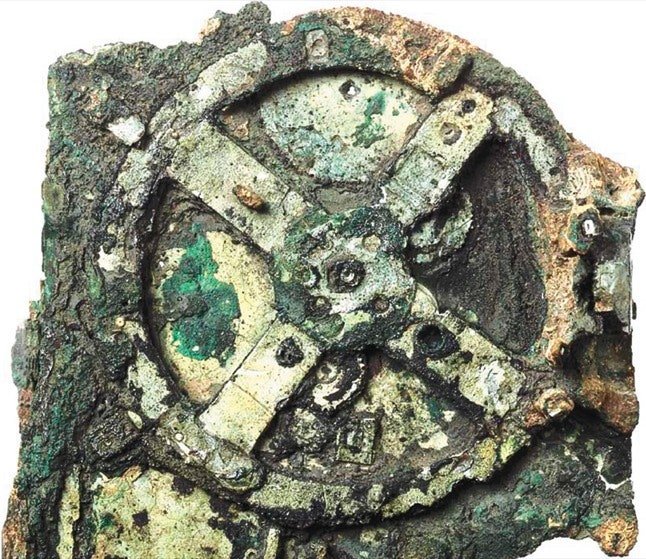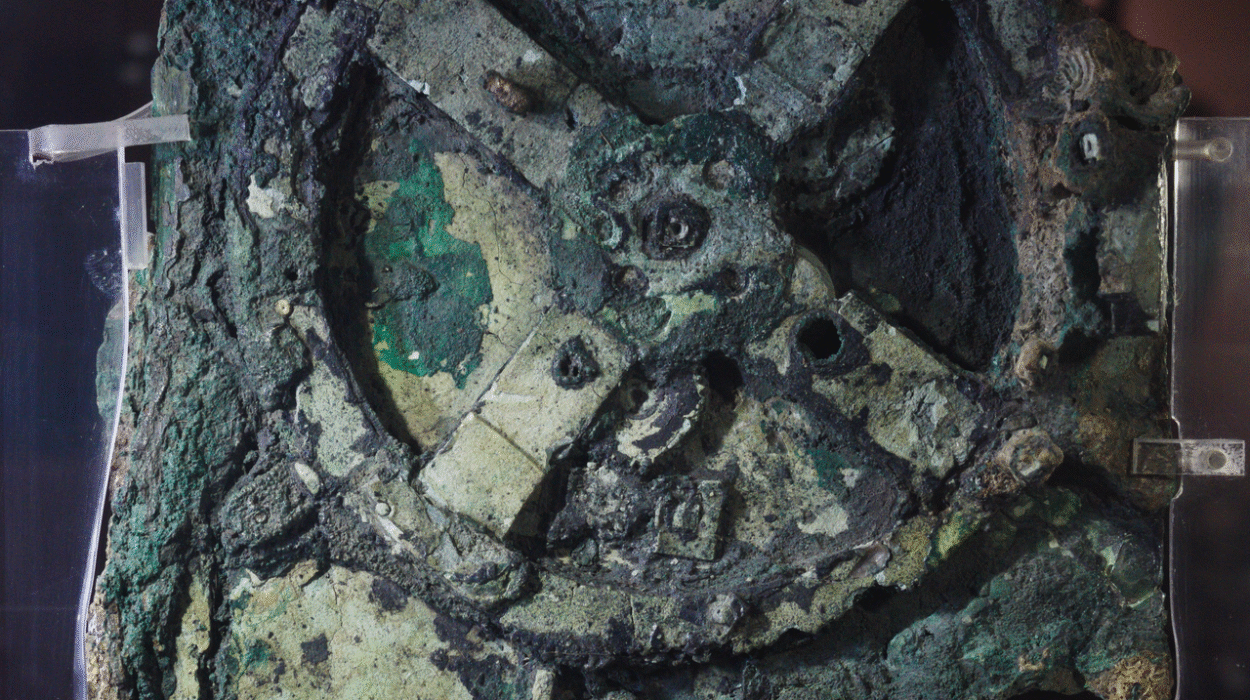History, as written in textbooks, follows a fairly linear narrative: humanity evolved, developed tools, discovered agriculture, founded cities, created writing, and then slowly inched forward through trial and triumph to arrive at the modern world. But sometimes, strange things surface—objects that don’t quite fit the expected timeline. These items, known as “anomalous artifacts” or “out-of-place artifacts,” challenge our understanding of the ancient world.
Were our ancestors more advanced than we realize? Did forgotten civilizations once rise and fall, their achievements swallowed by time and erosion? Are we missing entire chapters of human history? While mainstream science rightly approaches such claims with skepticism, the existence of certain artifacts sparks curiosity and sometimes controversy.
These are not fictional relics from Indiana Jones or fantasy novels—they are real objects cataloged in museums, described in archaeological reports, or discovered by chance. And they raise a tantalizing question: what if history isn’t quite what we think?
Let us journey through ten of the most intriguing ancient artifacts that, by conventional standards, shouldn’t exist—but do.
1. The Antikythera Mechanism: The Ancient Greek Computer
In 1901, sponge divers exploring a Roman-era shipwreck near the Greek island of Antikythera brought up what appeared to be corroded bronze gears encrusted in stone. At first, archaeologists thought it was a lump of scrap metal. But closer inspection revealed an astonishing complexity hidden inside the artifact.
The Antikythera Mechanism, dated to around 100 BCE, is now recognized as the world’s first analog computer. Using a series of precisely cut gears and dials, it could predict solar and lunar eclipses, model the movements of the five known planets, and track the cycles of the Olympic Games.
Nothing like it would appear again until the development of sophisticated astronomical clocks in the Middle Ages, more than a thousand years later. How did the ancient Greeks possess such technical mastery? Was this a lone genius’s invention, or evidence of a broader, now-lost tradition of mechanical engineering?
X-ray imaging and 3D modeling have allowed scholars to reconstruct much of the mechanism’s function, but many of its mysteries remain. It challenges the assumption that ancient science was primitive and offers a glimpse into a civilization whose intellectual prowess may have been far greater than we’ve given it credit for.
2. The Baghdad Battery: Electricity in the Ancient World?
In the 1930s, while excavating a Parthian-era village near modern Baghdad, archaeologists uncovered a small ceramic pot containing a copper cylinder and an iron rod. The object, dated to around 250 BCE, resembled nothing so much as a modern galvanic cell—a battery.
When replicas were built and filled with an acidic solution, such as vinegar or lemon juice, they produced a small electrical charge. Though the voltage was low, it was enough to suggest the possibility that the “Baghdad Battery” could have been used to electroplate metals, a technique otherwise unknown in antiquity.
Skeptics argue that it might have simply been a storage vessel, perhaps for sacred scrolls or alchemical substances. There’s no definitive proof that ancient Mesopotamians harnessed electricity. But the design is oddly suggestive, and the debate has not gone away.
If it truly was a primitive battery, then our assumptions about the technological capabilities of ancient craftsmen may need serious revision. Could the ancients have discovered electrochemistry millennia before Volta?
3. The Piri Reis Map: A Glimpse of Ancient Global Knowledge?
In 1513, an Ottoman admiral named Piri Reis compiled a world map using a collection of ancient charts. The map, drawn on gazelle skin parchment, depicts the coasts of Europe, Africa, and South America with remarkable accuracy—especially considering that much of the New World had barely been explored by Europeans.
What truly baffles researchers is the lower portion of the map, which appears to show the coastline of Antarctica—free of ice. Yet Antarctica was not officially discovered until 1820, and satellite imagery confirming its subglacial terrain only became available in the 20th century.
Some believe the Piri Reis Map may be based on older source maps created by a now-lost seafaring civilization. Others argue that the resemblance is coincidental, or that ice-free Antarctica is a misinterpretation.
Whatever the truth, the map raises provocative questions. Could ancient mariners have circumnavigated the globe long before Magellan? Could they have charted lands that modern civilization only “discovered” centuries later?
4. The London Hammer: Modern Tool, Ancient Rock
In the 1930s, a couple hiking near London, Texas, discovered a curious artifact embedded in a rock formation. The object appeared to be a hammer, with a wooden handle partially fossilized and a metal head made of iron. But the surrounding rock was dated to be over 100 million years old.
Creationists seized on the find as evidence that modern humans—or perhaps time travelers—once lived in the distant past. Mainstream geologists counter that the rock may have formed around the hammer through a process called concretion, enclosing the object in a hard mineral shell over a much shorter time frame.
Still, the hammer’s composition—96% iron, with traces of chlorine and sulfur—suggests an unusual metallurgy for the claimed time period. Could it be an old miner’s tool that somehow became geologically encased? Or something more mysterious?
The hammer remains a source of debate, not because it proves an alternative history, but because it forces us to confront how artifacts can sometimes defy easy classification.
5. The Saqqara Bird: Ancient Egyptian Glider?
In 1898, in a tomb near the ancient city of Saqqara, archaeologists unearthed a small wooden artifact that resembled a bird. Dated to around 200 BCE, it was initially thought to be a toy or ritual object. But its design puzzled researchers: it lacked legs, had a fixed rudder-like tail, and its wings were shaped more like those of a glider than a bird.
Some theorists proposed that it might represent an early understanding of aerodynamics. Could the ancient Egyptians have experimented with flight? In the 1970s, model aircraft designers built a scaled version of the Saqqara Bird, and under the right conditions, it achieved stable gliding.
Skeptics argue it was merely a stylized falcon, a common motif in Egyptian mythology. Yet the precision of its shape continues to intrigue those who believe ancient cultures may have possessed rudimentary knowledge of flight, long before the Wright brothers.
The Saqqara Bird occupies a fascinating place between speculation and science, symbolism and innovation.
6. The Ica Stones: History Carved in Stone—or Hoax?
In the 1960s, Dr. Javier Cabrera of Peru began collecting carved stones from the Ica region. These stones, made of andesite, bore elaborate engravings—some showing advanced surgeries, telescopes, and even dinosaurs being hunted by humans.
If genuine, the stones would rewrite history, suggesting that an advanced civilization once lived alongside prehistoric creatures. But skepticism abounds. Some locals admitted to carving the stones as hoaxes to sell to tourists, and mainstream archaeologists dismiss them as modern fabrications.
Yet others point out that similar stones have been reported for decades, and some carvings appear deeply weathered. Is it possible that a few genuine anomalies have been lost in a sea of fakes?
The Ica Stones may not provide definitive evidence of an unknown civilization, but they serve as a cautionary tale about how easy it is to blur the line between wonder and wishful thinking.
7. The Dendera Light: Electricity in Ancient Egypt?
In the Temple of Hathor at Dendera, Egypt, reliefs on the walls show what some believe resemble giant light bulbs. The carvings depict a bulb-like object with a serpent inside, connected to a box by a wire. According to some alternative theorists, this could be evidence of ancient electrical lighting.
Mainstream Egyptologists interpret the images differently, seeing them as mythological representations of the lotus flower giving birth to a serpent—symbols of creation and fertility. There is no physical evidence of electrical infrastructure in ancient Egypt.
Still, the Dendera images are curious. Some experimental archaeologists have recreated similar designs and found they could emit light under specific conditions using primitive batteries and evacuated glass tubes.
The idea that ancient priests might have used electric light in temple rituals is speculative, but not entirely dismissed by fringe researchers. Whether religious symbolism or technical blueprint, the Dendera reliefs continue to invite debate.
8. The Dropa Stones: Messages from the Stars?
In 1938, a Chinese archaeologist named Chi Pu Tei reportedly discovered a series of stone discs in the Bayan Har Mountains of Tibet. These “Dropa Stones” were said to be 12,000 years old, made of granite, and inscribed with microscopic hieroglyphs arranged in spirals.
According to later reports, the stones told the story of an extraterrestrial race, the Dropa, who crash-landed on Earth and were stranded in the Himalayas. Over time, they integrated with local tribes.
The story gained attention in the 1960s, appearing in UFO books and magazines. But efforts to verify the existence of the stones have failed. Chinese authorities deny that such artifacts were ever found, and photographs of the discs are scarce and inconclusive.
Many scholars consider the Dropa Stones a hoax or a misinterpretation of other archaeological finds. Yet the tale persists, fueled by the human desire to believe that we are not alone—and that aliens may have visited long before recorded history.
9. The Tecaxic-Calixtlahuaca Head: A Roman Statue in Ancient Mexico?
In 1933, archaeologist José García Payón unearthed a small terracotta head in a burial site near Mexico City. The style of the head appeared Roman, and radiocarbon dating placed the burial around 700 CE—centuries before Columbus.
How could a Roman artifact end up in pre-Columbian Mesoamerica?
Some suggest it could be evidence of transoceanic contact between the Old World and the New. Others argue that the head was accidentally introduced during modern times, perhaps dropped by a collector or traveler before the excavation.
Though the artifact’s provenance is disputed, its implications are vast. If genuine, it would indicate that ancient peoples may have crossed the Atlantic long before the Vikings or Columbus—a radical rewrite of early global history.
10. The Fuente Magna Bowl: Sumerian Script in South America?
In the 1950s, a mysterious stone bowl was discovered near Lake Titicaca in Bolivia. Dubbed the “Fuente Magna,” the bowl contains cuneiform-like inscriptions alongside a proto-Sumerian script.
How could ancient Mesopotamian writing appear in the Andes?
Mainstream scholars are skeptical. The bowl’s discovery was poorly documented, and its symbols could be coincidental. But others suggest it hints at forgotten maritime connections or a lost global culture.
Despite the controversy, the Fuente Magna remains in a Bolivian museum and continues to attract researchers, linguists, and fringe theorists alike. It represents both the allure and the challenge of anomalous archaeology—objects that don’t fit, but demand to be explained.
Conclusion: The Edges of the Known
Whether forged, misunderstood, or genuinely anomalous, the artifacts described here remind us of something important: history is not always tidy. It is written in fragments, scattered in deserts, buried under oceans, etched in stone, and lost to time.
Each artifact opens a window—not just to the past, but to the mind of the present. They reveal our desire to find deeper truths, to challenge orthodoxy, and to reimagine the ancient world not as a simple ladder, but as a sprawling web of possibilities.
Are these artifacts truly evidence of forgotten civilizations, lost technologies, or prehistoric visitors from beyond the stars? Perhaps not. But they serve a vital function in keeping human curiosity alive. They urge us to dig deeper, ask harder questions, and accept that we may not yet know the full story of our origins.
In the end, it’s not just about what these artifacts are—but about what they inspire in us: awe, wonder, and the courage to seek the unknown.



